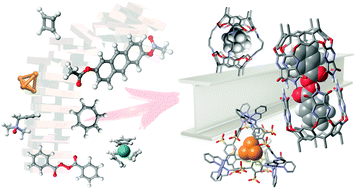Stabilization of reactive species by supramolecular encapsulation
Abstract
Molecular containers have attracted the interest of supramolecular chemists since the early beginnings of the field. Cavitands' inner cavities were quickly exploited by Cram and Warmuth to construct covalent containers able to stabilize and assist the characterization of short-lived reactive species such as cyclobutadiene or o-benzyne. Since then, more complex molecular architectures have been prepared able to store and isolate a myriad of fleeting species (i.e. organometallic compounds, cationic species, radical initiators…). In this review we cover selected examples of the stabilization of reactive species by encapsulation in molecular containers from the first reports of covalent containers described by Cram et al. to the most recent examples of containers with self-assembled structure (metal coordination cages and hydrogen bonded capsules). Finally, we briefly review examples reported by Rebek et al. in which elusive reaction intermediates could be detected in the inner cavities of self-folding resorcin[4]arene cavitands by the formation of covalent host–guest complexes. The utilization of encapsulated reactive species in catalysis or synthesis is not covered.


 Please wait while we load your content...
Please wait while we load your content...